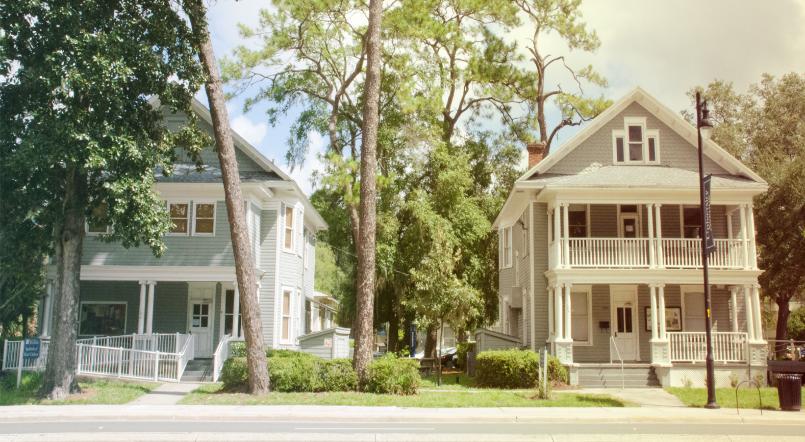
As a preeminent university, the University of Florida is the only university in the Southeast with two dedicated spaces for each under-represented populations of African American and Hispanic-Latino American students. In addition to the newly opened Black Enrichment Center and Hispanic-Latino Engagement Center located in the J. Wayne Reitz Union, the Institute of Black Culture and the Institute of Hispanic-Latino Cultures are the original dedicated spaces for Black and Hispanic-Latino students at UF.
During the summer of 1954, the University of Florida purchased two white frame buildings at 1510 and 1504 West University Avenue and turned them over to the Dept. of Housing to manage. 1504 was first used as a fraternity space where 17 men lived in the house which was known as The King’s House. Then the house became the International Center that helped students with visas and adjusting to life in the U.S. as well as at UF. This space has also housed the UF English Department.
In the wake of student protests, university administration established the Institute of Black Culture (IBC) in the fall of 1971. The IBC was officially dedicated on February 11, 1972.
In 1994, Hispanic and Latino students at UF, growing in numbers on campus petitioned for space. In May 1994, the house was dedicated as the Institute for Hispanic-Latino Cultures (La Casita).
The institutes play a significant role in the lives and development of the underrepresented students here at the University of Florida, by serving as hubs for students to congregate before, in between, and after classes. With more than 75 student ambassadors and 6 professional staff, the Institutes are home to the logistical, supportive, and empowering work that serves UF students. The Institutes are also very popular spaces for student and community organization to host events, programs, and trainings.
To learn more about the Institute of Black Culture’s history, please visit Black Affairs.
To learn more about the Institute of Hispanic-Latino Cultures’ history, please visit Hispanic-Latino Affairs.
